Resources
Articles
Common Steel Ladle Problems - Solving and Avoiding
When working with ladles sometimes refractory problems can occur. Being aware of the potential issues will help you avoid and solve them if they occur.
Possible Solution: Steel Ladle Joint Erosion
- Use ladle refractories with positive reheat expansion to help keep brick joints tight.
- Make sure that the mortar used has an alumina or MgO content comparable to or higher than the corresponding brick product. Low carbon heats (higher tap temperature) require a high purity refractory mortar (basic and/or higher alumina).
- Take care to lay the tilt brick course level. Otherwise, succeeding courses may require excessive mortar to level.
- Avoid mortar joints in excess of 1/16” thick.
- Lay semi-universal brick (SULB) so that the male and female ends of adjoining brick have a continuous and tight fit.
Possible Solutions: Metal Penetration in Bottom Refractories
- Inspect the condition of the bottom safety lining. If it is not completely level, level it with a dense granular material pre-dampened to ramming consistency and then troweled smooth over the safety bottom brick.
- The periphery of the working bottom should be rammed with a quality high alumina ramming mix or plastic. Whatever material is used should have expansive properties at operating temperatures.
- Make sure that all mortar joints are full, continuous, and not more than 1/16” thick.
- Use larger shapes to reduce the number of joints.
- After a bottom installation is complete, covering the bottom with a slurry of mortar will allow brick to undergo thermal expansion before actual metal contact,
Possible Solutions: Steel Ladle Skulling
- Turn ladles around as soon as possible. This will reduce the number of ladles required for normal production and ladles will remain hotter
- Preheat ladle lining to at least 2000°F if high alumina and/or basic refractories are being used. The ladle should remain at the preheating station until the furnace is ready to tap and should be returned to the preheater immediately after dumping slag.
- If ladle preheating is insufficient or impractical, adjust tap temperature accordingly.
- Use ladle covers (refractory insulated design) and/or synthetic insulating material to help maintain steel melt and ladle temperatures during teeming/casting.
Possible Solutions: Steel Ladle Slagline Corrosion/Erosion
- Determine chemistry of slag in contact with refractory slagline for more than ten minutes at a time. If the lime/silica ratio is about 1.5 or higher, basic refractories should be used in slagline zone.
- Make certain that the height of the slagline is sufficient to allow contact with slag in any amount as well as any possible slag splashing. This will take into account “short heats,” which would lie lower in the ladle, and later volume increase because of lining wear.
- If skulls have a tendency to “hang on” to the brick lining in the bottoms, slaglines, or the pouring lip, then carbon bearing refractories should be considered for these areas. This practice can enhance with skull removal.
- Make sure mortar is used generously between the safety and working linings. This will facilitate skull removal if metal penetration does occur.

Leave a comment